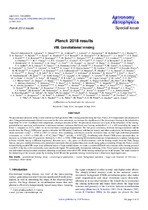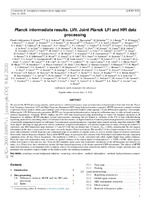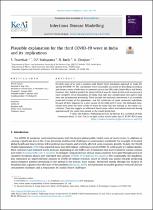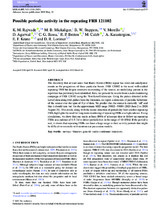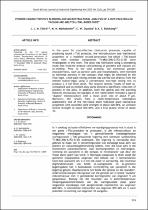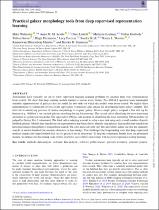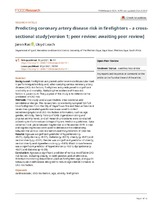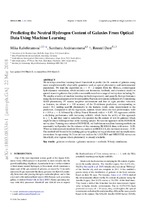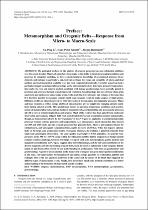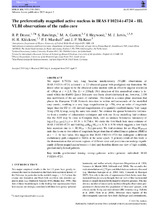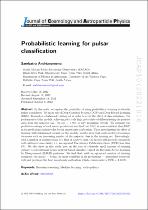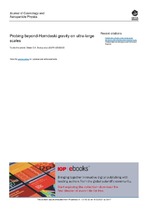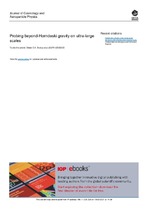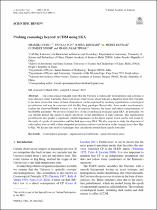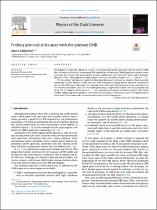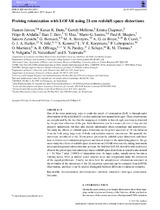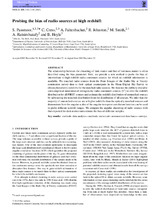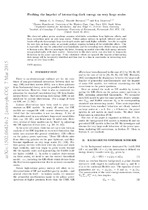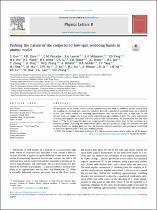Browsing Physics and Astronomy by Title
Now showing items 391-410 of 533
-
Planck 2018 results VIII. Gravitational lensing
(EDP Sciences, 2020)We present measurements of the cosmic microwave background (CMB) lensing potential using the final Planck 2018 temperature and polarization data. Using polarization maps filtered to account for the noise anisotropy, we ... -
Planck 2018 results. XI. Polarized dust foregrounds
(EDP Sciences, 2020)The study of polarized dust emission has become entwined with the analysis of the cosmic microwave background (CMB) polarization in the quest for the curl-like B-mode polarization from primordial gravitational waves and ... -
Planck intermediate results. LVII. Joint Planck LFI and HFI data processing
(ESO, 2020)We present the NPIPE processing pipeline, which produces calibrated frequency maps in temperature and polarization from data from the Planck Low Frequency Instrument (LFI) and High Frequency Instrument (HFI) using ... -
Plausible explanation for the third COVID-19 wave in India and its implications
(KeAi Communications, 2023)Recently some of us used a random-walk Monte Carlo simulation approach to study the spread of COVID-19. The calculations were reasonably successful in describing secondary and tertiary waves of infection, in countries such ... -
Possible periodic activity in the repeating FRB 121102
(Oxford University Press, 2020)The discovery that at least some Fast Radio Bursts (FRBs) repeat has ruled out cataclysmic events as the progenitors of these particular bursts. FRB 121102 is the most well-studied repeating FRB but despite extensive ... -
Powder characteristics blending and microstructural analysis of a hot-pack rolled vacuum arc-melted gamma-tial-based sheet
(The Southern African Institute for Industrial Engineering, 2022)In the quest for cost-effective fabrication processes capable of producing sound γ-TiAl products, the microstructure and mechanical properties of a modified second-generation hot-rolled γ-TiAl-based alloy with nominal ... -
Practical galaxy morphology tools from deep supervised representation learning
(Oxford University Press, 2022)Astronomers have typically set out to solve supervised machine learning problems by creating their own representations from scratch. We show that deep learning models trained to answer every Galaxy Zoo DECaLS question ... -
Predicting coronary artery disease risk in firefighters – a cross-sectional study
(2021-07-30)Background: Firefighters are placed under severe cardiovascular load in performing active duty and, when carrying various coronary artery disease (CAD) risk factors, firefighters are predisposed to significant morbidity ... -
Predicting the neutral hydrogen content of galaxies from optical data using machine learning
(Oxford University Press, 2018)We develop a machine learning-based framework to predict the Hi content of galaxies using more straightforwardly observable quantities such as optical photometry and environmental parameters. We train the algorithm on z ... -
Preface Metamorphism and Orogenic belts—response from micro- to macro-scale
(Springerlink, 2019)The geological toolbox for the analysis of orogenic processes has seen substantial additions over the recent decades. Major advances have been made in the ability to simulate geological conditions and processes by computer ... -
The preferentially magnified active nucleus in IRAS F10214+4724 - III. VLBI observations of the radio core
(Oxford University Press, 2013)We report 1.7GHz very long baseline interferometry (VLBI) observations of IRAS F10214+4724, a lensed z = 2.3 obscured quasar with prodigious star formation. We detect what we argue to be the obscured active nucleus with ... -
Probabilistic learning for pulsar classification
(IOP Publishing, 2022)In this work, we explore the possibility of using probabilistic learning to identify pulsar candidates. We make use of Deep Gaussian Process (DGP) and Deep Kernel Learning (DKL). Trained on a balanced training set in ... -
Probing beyond-Horndeski gravity on ultra-large scales
(2020)The beyond-Horndeski gravity has recently been reformulated in the dark energy paradigm — which has been dubbed, Unified Dark Energy (UDE). The evolution equations for the given UDE appear to correspond to a non-conservative ... -
Probing beyond-Horndeski gravity on ultra-large scales
(IOP Publishing Ltd, 2020)The beyond-Horndeski gravity has recently been reformulated in the dark energy paradigm — which has been dubbed, Unified Dark Energy (UDE). The evolution equations for the given UDE appear to correspond to a non-conservative ... -
Probing Cosmology beyond ΛCDM using the SKA
(Indian Academy of Sciences, 2023)The cosmological principle states that the Universe is statistically homogeneous and isotropic at large distance scales. Currently, there exist many observations which indicate a departure from this principle. It has ... -
Probing primordial features with the primary CMB
(Elsevier, 2019)We propose to study the imprint of features in the primordial power spectrum with the primary CMB after the subtraction of the reconstructed ISW signal from the observed CMB temperature angular power spectrum. We consider ... -
Probing reionization with LOFAR (Low Frequency Array) using 21-cm redshift space distortions
(Oxford University Press, 2013)One of the most promising ways to study the epoch of reionization (EoR) is through radio observations of the redshifted 21-cm line emission from neutral hydrogen. These observations are complicated by the fact that the ... -
Probing the bias of radio sources at high redshift
(Oxford University Press, 2013)The relationship between the clustering of dark matter and that of luminous matter is often described using the bias parameter. Here, we provide a new method to probe the bias of intermediate-to-high-redshift radio ... -
Probing the imprint of interacting dark energy on very large scales
(American Physical Society, 2015)The observed galaxy power spectrum acquires relativistic corrections from light-cone effects, and these corrections grow on very large scales. Future galaxy surveys in optical, infrared and radio bands will probe increasingly ... -
Probing the nature of the conjectured low-spin wobbling bands in atomic nuclei
(Elsevier, 2022)The precession of an atomic nucleus can be approximately described as wobbling motion, arising from the coupling of a rotation and a harmonic vibration. Recently, a number of wobbling bands were reported at low spin, which ...

